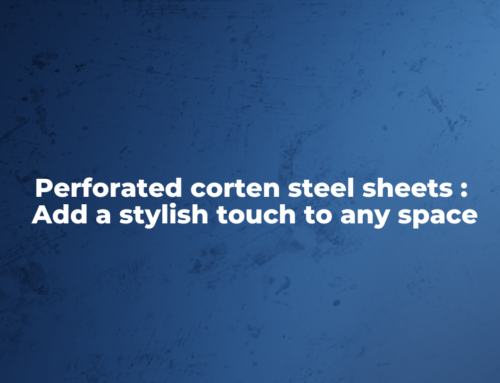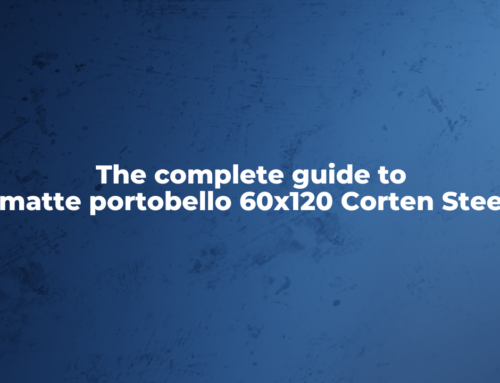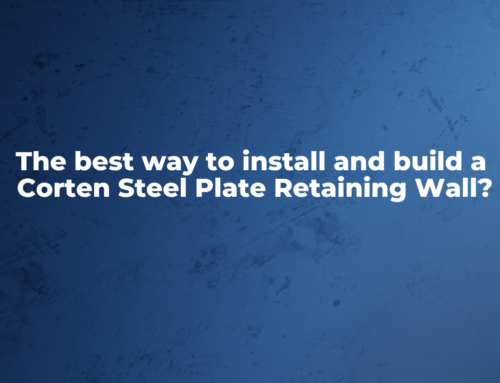Landscape designers are attracted to Corten’s aesthetic appeal. The patina on steel is attractive in a way that pairs well with stone, wood, and plants. At Ross NW Watergardens, we mostly use corten steel for pots, planters, troughs, and raised beds.
Speaking of Corten Steel, specialized Corten Steel is used for proper functioning. Cortensteeltube.com Is one leading Manufacturer, Supplier & Stockist Of Corten Steel ASTM A423 Grade 1 Tubes.
Within 6 months of atmospheric exposure, Corten steel will patina or rust. A weathering steel type needs cycles of wet/dry weather to develop and oxidize.
Corten steel can last upwards of a few decades to over 100 years due to its protective rust.
Corten steel, or weathering steel, is primarily used for landscaping and outdoor construction. The surface develops self-protecting rust when exposed to weather because it is made of alloys. It resists corrosion, does not require painting or weatherproofing, and does not compromise structural strength.
Weathering steel and corten steel are interchangeable materials that provide high strength and corrosion resistance. A patina (rust) protects corten steel from corrosion and atmospheric elements, so it is suitable for outdoor architecture and landscaping projects. As well as its aesthetics, corten steel has the advantage of not needing to be painted or maintained and can be used in a variety of applications.
As a result of its corrosion resistance and high tensile strength, this steel alloy appears rusty when exposed to the environment. This paper compares corten steel plates subjected to salt spray testing with corten steel plates welded together. Corten steel plates have two distinct properties: corrosion resistance and high tensile strength. Salt spray changes the properties of corten steel plates. Despite being exposed to marine conditions, both corten steel plates and welded corten steel plates did not lose significant strength.
How does Corten steel work?
Corten Steel, one of the groups of ‘Weathering Steels’, is a low-alloy, high-strength steel that rusts when exposed to the elements.
The rust that develops seals the surface by creating a protective layer preventing further corrosion and reducing the amount of glare that can be observed on standard metals. As a result of this process, the material’s life is extended while it is less maintenance-intensive.
In the 1930s, Corten was used to make coal carriages in the US. In addition to its strength and corrosion resistance, it is alloyed with nickel, copper, and chromium. Architecture can be used to design buildings, roofs, bridges, and sculptures, among other things.
Corten Steel is oxidized when it is exposed to alternate wet and dry conditions outside. During continuous regeneration, the rust layer changes color from orange to dark brown, promoting corrosion resistance. Eventually, the rust layer becomes a patina layer, changing its color from orange to dark brown.
It will take between 4-10 years for Corten steel to oxidize, but more frequent wet-dry cycles will speed up the process.
What are the benefits of Corten Steel?
It is easy to maintain Corten Steel and it has many benefits. In addition to its high strength, Corten is a low-maintenance steel that is ideal for structures where maintenance is difficult or dangerous, such as bridges, or where disruption is needed to minimize, such as around major roads or railways.
Corten can be constructed more quickly than other steel types since painting is eliminated from the construction process. It is more economical to use Corten Steel since it is corrosion resistant and the rust appearance that develops can enhance the longevity of the application.
Despite the corrosion and rust, the Corten steel still stands
It is important to note that Corten steel is corrosion-resistant, but it does not entirely resist rust. It depends on the climate and environment as to how long Corten steel will last and how quickly the protective layer of rust will form.
- Weathering steel requires wet/dry weather cycles to develop and oxidize. Corten steel will patina or rust after six months.
- Providing corrosion resistance, Corten steel can last as long as 100 years with protective rust.
- By using vinegar and peroxide mixed with salt water, Corten can be prevented from rusting faster
What are the advantages of weathering steel?
- Low maintenance
- Cost-effective
- Long-term durability
- Perfect for heavy-duty applications such as bridgework
The following applications are best suited to corten steel:
- Bridgework
- Outdoor sculptures
- Landscaping work/gardens
- Marine applications
- Roofing
- Signposts
Cortensteeltube.com is a leading supplier, stockist, manufacturer & exporter of Corten Steel. Get in touch with us for the best rates & availability Of Corten Steel ASTM A423 Grade 1 Tubes









Leave A Comment